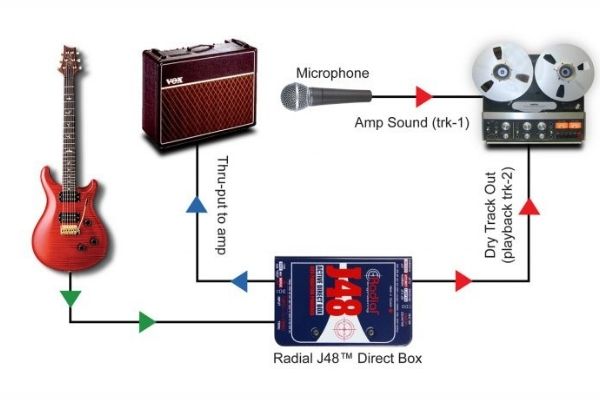How to Re-amp a Guitar

Hey all, we get a lot of questions on this topic so we thought we’d have a Grammy award winning recording engineer explain how it’s done. Actually, re-amping a guitar sounds more complicated than it is. It’s a fairly simple process of recording a guitar part clean in to a DAW, routing it through a re-amp or reamper box (both terms are used commonly in the recording studio world) to a guitar amp, micing the amp and recording it back in.
Yes guitar amp plugins are getting pretty good these days, but nothing beats the sound of a great guitar part through a great amp in a great room. Here’s how it’s done:
The Benefits of Re-amping
There are a lot of benefits to re-amping a guitar. Maybe you work in a small bedroom studio and can’t turn up your amp without bothering the people around you. Or, maybe you’re recording by yourself and don’t have enough hands to play the guitar part, adjust the settings on an amp and move microphones at the same time. This technique isn’t just for home studio owners with limited resources though, re-amping is used by major mix engineers and producers who may realize after-the-fact that the guitar tone just isn’t cutting it. They send the clean guitar track through that perfect amp with that perfect microphone through that perfect preamp–the possibilities are endless. So, the next time you record guitar try this re-amping technique to dial in that amazing guitar tone you’re looking for.
A reamper box is a necessary component for some audio interfaces, others can send signal at line level and eliminate the need for a reamper box. If you do need a box, here are some links to professionally made re-amp boxes and some DIY ones as well:
Radial Engineering makes a variety of solid re-amping boxes with different features:
http://www.radialeng.com/
Here’s an easy DIY tutorial on how to make your own reamper box:
http://www.recordingmag.com/resources/resourceDetail/314.html

